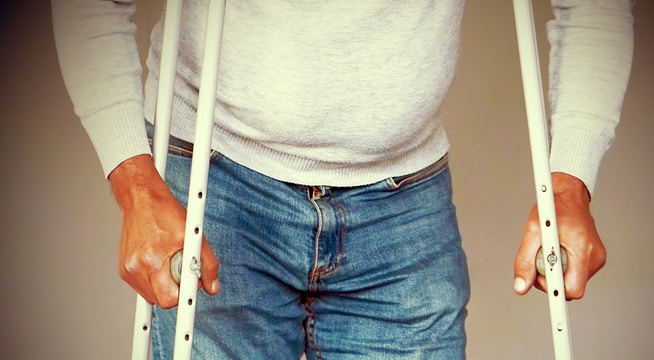Hip Fracture
Breaks & Fractures
•
Jul 20, 2020

Hip fractures are common injuries among senior individuals who’ve experienced a fall. Typically, when they occur to older patients, it’s due to a chronic health condition, muscle weakness, or impaired vision. It could also be the result of declining balance/coordination while walking, or difficulties getting in and out of the bathtub. On the other hand, hip fractures can also affect younger patients who’ve been involved in an accident or who’ve gotten injured while playing sports. Regardless of the circumstances, these types of injuries are extremely painful and affect every aspect of daily life. So, how can you learn to recognize symptoms? And, what are the best forms of treatment?
What is a hip fracture?
The hips include several bones. The pubic symphysis is located above a person’s genitalia. It is the area where the pubic bones connect. There are also two ball-and-socket joints where your femur (thigh bone) meets the pelvis, as well as the base of the lumbar vertebrae (the sacrum) and the tailbone (the coccyx), which is connected to the sacrum. All of these bones are held together with tendons, muscles, and ligaments. Hip fractures occur when a person breaks any of these bones.
After the knees, the hips are the largest joints in the body. They play a major role in your ability to sit, stand up, and walk. Therefore, hip fractures are serious injuries — and if the patient is older, they could also lead to life-threatening complications.
Symptoms of a Hip Fracture
There are several signs that you may have broken a bone on your hips. The most common ones include:
- Hearing a cracking sound as the bone breaks
- Intense pain at the point of injury
- Pain that may radiate to the groin
- The inability to get up from a fall
- Bruising and swelling
Treatment Options for Hip Fractures
The best form of treatment for a hip fracture will depend on the severity of the bone break, whether the bones are aligned, the patient’s age, and any underlying medical conditions. The most common treatments include:
1. Medication and Crutches
Minor fractures may heal on their own. However, they still cause intense pain. Your doctor will prescribe painkillers, as well as order bed rest for several weeks and only move from one place of your home to another with the use of crutches.
2. Surgery
For misaligned bones or major fractures, your doctor may have to conduct either a partial or total hip replacement. In some cases, the surgeon may opt to hold the joint together with metal screws instead of replacing the joint.
3. Physical Therapy
After surgery, you will require physical therapy to regain your range of motion as well as to strengthen the muscles around the hip joints. You may also need an occupational therapist to assist you with activities of daily living — such as using the toilet, bathing, and dressing.
Complications of Hip Fractures
There are certain factors that can increase the risk of complications. Many of these include underlying health conditions, such as diabetes (Types 1 and 2), intestinal disorders, myocardial infarction, and neurological impairments. These can make recovery more difficult due to a higher risk of infection, lower bone density, difficulty producing clotting agents, or an increased risk of falls. The most common complications include:
- Blood clots
- Bedsores
- Loss of muscle mass
- Pneumonia
- Death
Risk Factors for Hip Fractures
There are several circumstances that could increase a person’s risk of fractures. These include:
- Age: Hip fractures occur more often on older individuals due to decreased bone density. This is a double-edged sword that could also lead to balancing issues — which can increase the risk of falls.
- Trauma: While falls are considered trauma, in younger patients who do not have bone density issues, common causes of hip fractures include being involved in a car accident or receiving a hard hit.
- Sex: Hip fractures tend to occur more often in women. This is due to a decrease in estrogen after menopause, which often results in a lower bone density. That being said, men could also experience a hip fracture.
- Chronic health conditions: Osteoporosis, an overactive thyroid, endocrine disorders, or intestinal issues may cause weakened bones or malabsorption of calcium and vitamin D.
- A sedentary lifestyle: The less a person uses their bones and muscles, the weaker they become — especially weight-bearing joints such as the knees and the hips.
- Certain medications: Certain medications — such as cortisone — are known to reduce bone density when used long-term. In addition, other types of drugs may include dizziness as a side effect, which could result in falls.
- Smoking and alcohol: Consuming tobacco or drinking alcoholic beverages in excess often leads to accelerated bone loss, making you more susceptible to experiencing a fracture if you fall.
24-Hour Emergency Room Services in Colorado Springs and Texas
If you or a loved one believe you may have a hip fracture, let us help you. If you have questions or need immediate treatment, your nearest Complete Care location is ready to help, no matter the time of day or night. We offer a variety of services to help you and your family in your time of need. No appointments are necessary.
